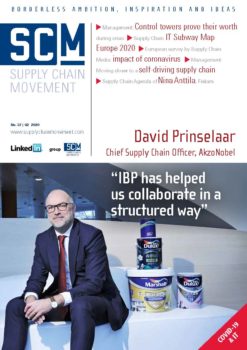Film director Martin Koolhoven: ‘‘To change behaviour you need to tell a story’’

The world is in a transitional phase, which means that almost all companies – and their supply chains – need to transform in order to survive. Storytelling is an effective instrument for overcoming employee resistance to that transformation. Supply Chain Media interviewed film director Martin Koolhoven who, besides being known for the Western thriller Brimstone and the Dutch film Winter in Wartime, also visits companies to hold presentations on storytelling.
Interview by Martijn Lofvers, edited by Mirjam Hulsebos
When I turn up for my interview with Martin Koolhoven, he is fervently typing on his laptop at a table in Amsterdam’s Kanarie Club. He is currently working on the script for his next film, which has the working title Batavia – a film noir set in the time of Indonesia’s struggle for independence. From my own modest contribution as a hobbyist researcher on Brimstone, I know that Koolhoven is a master storyteller, so he is the ideal person to teach companies the essentials.
Storytelling has been in vogue in the business world for a few years now. The American IT company IBM has even hired Hollywood script writers to develop its marketing strategy and create advertising campaigns. How can supply chain organizations use storytelling?
“Let me start by saying that storytelling has become a bit of a fad – and that’s a shame, because it means that it’s often misused too. If your only aim is to convey information, you don’t need to tell a story to do so. For example, if you go to your family doctor to hear the results of some medical tests, you just want to know whether you’re ill or not. You want the facts. Storytelling only adds value when you want to achieve a behavioural change, such as getting someone to change their lifestyle by eating more healthily and taking more exercise. Scientific research shows that storytelling is much more successful in changing behaviour than cold hard facts, because stories are linked to emotion.”
Companies often want to change people’s behaviour, such as when they take a new strategic direction, so they invest heavily in internal communication. But according to research by McKinsey, the majority of employees do not know how they contribute to the company’s strategy – so how effective is that communication?
“It isn’t effective, because those employees obviously don’t understand the full story. Listen, if companies themselves don’t have a clear view of how they contribute to today’s society, then you can’t expect employees to understand their role either. Most companies do actually have a story to tell because, after all, someone once started the company for a particular reason. But that story has often become watered down over the years because it hasn’t kept pace as the corporate vision and the mission have changed. A story always follows an arc. In its simplest form, a story has three parts: a beginning, a middle and an end. In the case of a corporate story, you could see that as the start, the present and the future. The start is often clear, but what companies fail to do is tell their workforce how they’ve got from the start to where they are today… and they find it impossible to describe how they envision the future and their company’s intended role in it. If that’s not clear, then you can’t really expect your employees to figure out for themselves what role they play in that story.” … … …
 Want to read more?
Want to read more?
Subscribe to the digital subscription to read the full version >>
or
select one of our annual or digital subscriptions to receive the next issue >>
This article was first published in Supply Chain Movement 37 | Q2 – 2020









